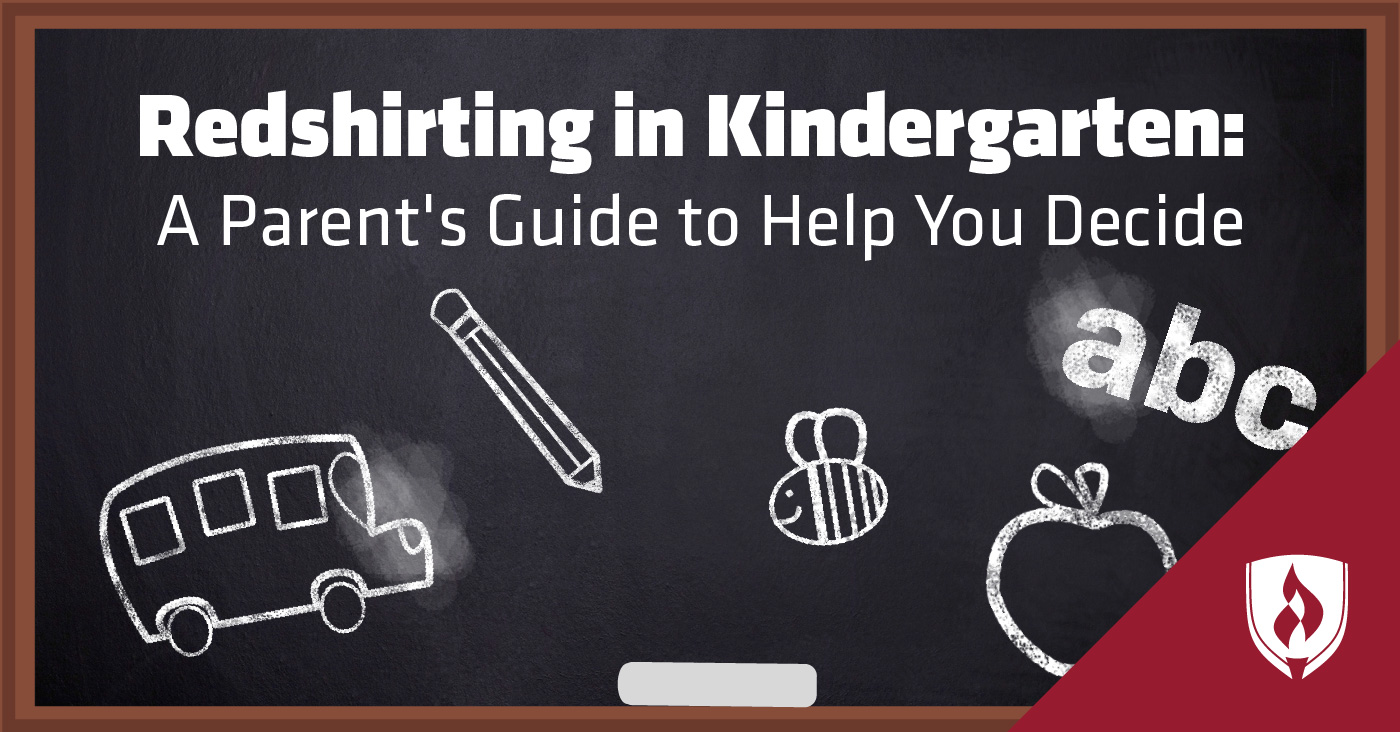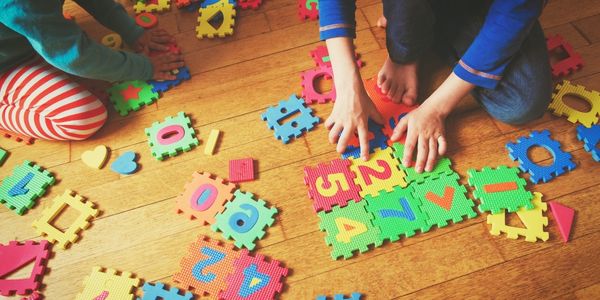It’s a bittersweet time as you watch your four-year-old romp and play, knowing that they’ll be going to kindergarten in just a few short months. On one hand, you’re excited to see them learn and grow alongside other kids. On the other hand, you’re nervous about how they’ll do in school. What if they’re not ready for kindergarten? What if they fall behind their peers?

You’re not alone in your concerns. More and more parents are choosing to delay sending their children to kindergarten—a practice referred to as “redshirting.” Depending on your child’s birthday and your state’s cut-off date, waiting a year to send your child to school could take them from being the youngest in the class to being the oldest.
Redshirting in kindergarten is a controversial topic, and is one that comes with logical pros and cons on both sides of the fence. We’re bringing you a comprehensive guide to help you make the best decision for your child.
Redshirting: a growing trend
Waiting a year to send a child to kindergarten used to be relatively rare. Just 4 percent of kindergarteners were six years old in 1968, but that number grew to 17 percent in 2008. So why is delaying kindergarten growing more popular?
Redshirting got its start in college athletics, when scholarship athletes would be held out of competitions for a year to both preserve a year of eligibility and gain strength and skill to become more competitive on the playing field.
The athletic reference of redshirting has been around for decades. But it became relevant to kindergarten-aged students in 2008, when Malcolm Gladwell popularized the idea.
Why do parents delay kindergarten?
In some cases, the same logic for redshirting athletes still contributes to children’s redshirting, such as delaying kindergarten for a child who is significantly smaller than other kids the same age. But the pressure for students to achieve academic success right from the start is a growing motivation behind the trend.
The New Yorker reports that many parents delay kindergarten in the hopes that it will give their child an academic advantage. Increased academic standards stemming from the No Child Left Behind Act contribute to the pressure for children to perform well on tests—even as young as kindergarten. In addition to academic achievement, some parents may choose to redshirt a child due to a developmental delay or a lack of social or emotional readiness.
Which kids are most likely to be redshirted?
Whatever a parent’s reasons for redshirting, there’s no denying that the practice is more popular in certain groups. The National Center for Education Statistics (NCES) reports that delayed entry in the 2010–2011 school year was more common among kids from households that earned at least 200 percent of the national poverty level, as well as those who had at least one parent with a bachelor’s degree. This dramatic increase could be explained in part by less affluent families not having the funds to pay for an extra year of preschool or childcare.
Redshirting is also more common among boys than girls, possibly because boys tend to be slower in developing emotional maturity.
The pros and cons of delaying kindergarten
Waiting a year to start kindergarten has its pros and cons, some of which aren’t apparent until adulthood. These are some of the arguments from experts on both sides of the redshirting debate.
Pro: Better self-regulation
Children who start kindergarten a year later are significantly less likely to struggle with inattention and or hyperactivity, which is an indicator of self-regulation, according to one Stanford study. The results affect children even later in childhood, with delayed-entry children showing a 73 percent reduction in hyperactivity and inattention at age 11.
Con: Risk of boredom
Kids who are the oldest in the class may gain an academic boost in the short-term but could lead to boredom down the road. As a New Yorker article points out, kids who grow bored with school during their early years are at risk of falling behind in high school and college because of underdeveloped study skills. Some findings even suggest that delayed kindergarten may be linked to increased high school dropout rates.
Pro: More confidence
Giving children additional time to hone their skills outside the classroom can foster their confidence in an academic setting, according to pediatric occupational therapist, child development expert and founder of Playapy, Amy Baez. Self-confidence is a desirable trait in kids, but it can’t be taught—it stems from competence and achievements, even small ones at early ages.
Con: Negative economic impact
Redshirting can place a squeeze on families’ wallets, both now and in the future. In the short-term, delaying kindergarten costs families an additional year of childcare or preschool tuition. In the long-term, delaying kindergarten means delaying entry to the workforce—a decision that experts estimate has a lifetime cost of $80,000 to the student, according to NPR.
Pro: Better test results
In the 2010–2011 school year, “delayed-entry kindergartners tended to outscore on-time and repeating kindergartners in reading, mathematics and science,” according to an NCES report. Though Baez notes that these heightened test results are only temporary, they may give students an early win that encourages a love of learning.
Con: Lack of peer-to-peer learning
The teacher isn’t the only one teaching your child in the classroom. If your child is the oldest in the class, they may be “surrounded by children with less developed vocabulary or who are delayed socially,” Baez says. Instead of benefitting from the advanced skills, behaviors and vocabularies of older students, redshirted kindergartners are often the most advanced kids in the classroom.
How do you know if redshirting is right for your child?
There’s no right or wrong answer to redshirting in kindergarten. Experts recommend paying attention to your child and looking for clues to what’s in their best interest.
Watch for signs that your child is ready for kindergarten, like an ability to communicate and listen as well as how they get along with others. On the other hand, Baez recommends being aware of signs that your child could benefit from an extra year in preschool or childcare, such as not being able to follow simple instructions or not being able to sit at a table for more than 15 minutes.
In most cases, you can rely on instinct to decide what’s right for your child, but there are certain circumstances where parents should seriously consider waiting the extra year.
“I would recommend delaying kindergarten if a child has significant behavioral concerns and also demonstrates developmental delays in other areas, including fine-motor or self-care skills,” Baez says.
No one knows your child like you do. Think about their current skills and development. Are they ready for a challenge, or do they need more time to work on skills in certain developmental areas? The Mayo Clinic recommends paying attention to your child’s signs of readiness and discussing your situation with your child’s teacher and doctor to help you make your decision.
The debate continues
You’re now well-versed in the debate about redshirting in kindergarten, but there are plenty of other hot-button education issues you should be aware of. Stay in the know with our article, “3 Trends in Early Childhood Education that You Should Know About.”
RELATED ARTICLES:




